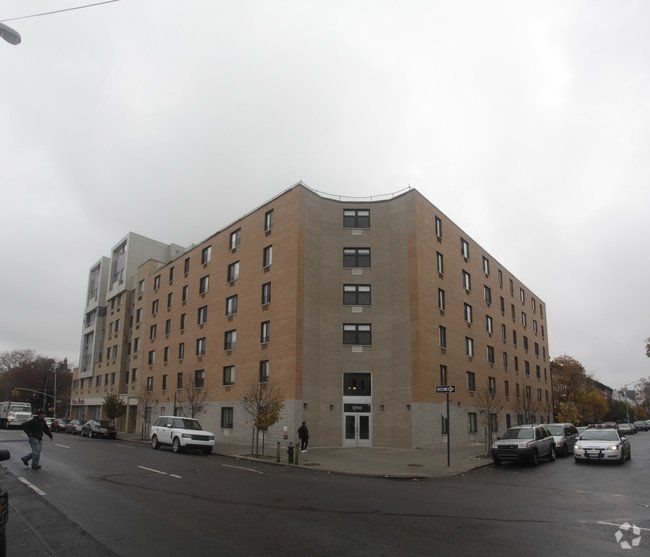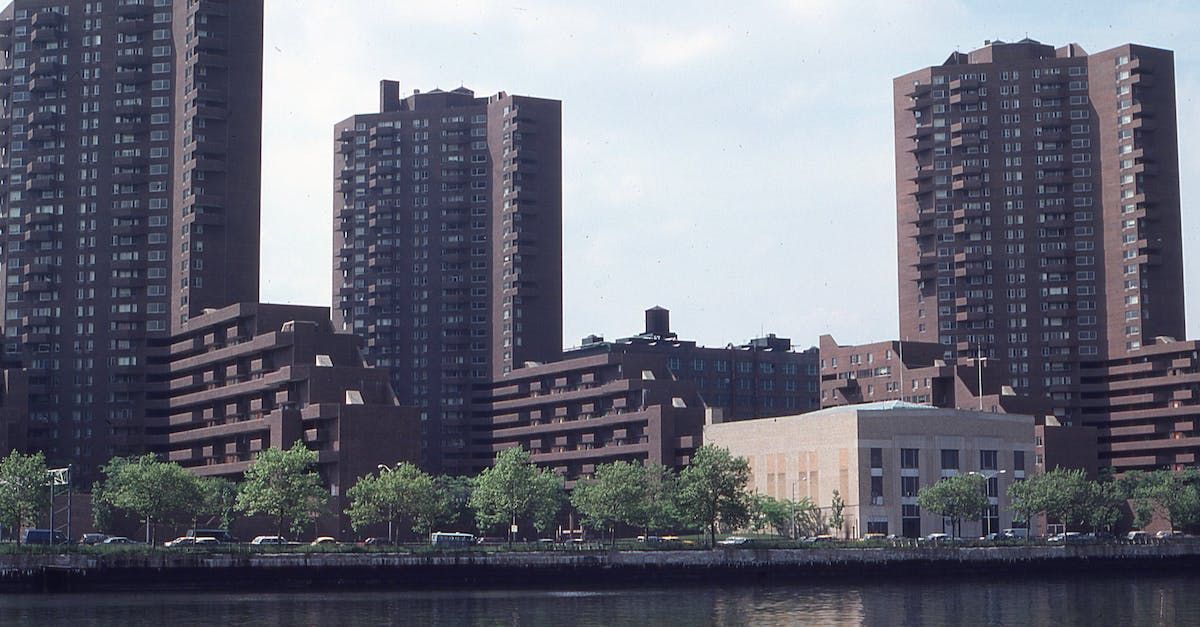Local Law 97 Q & A - ReDocs Roundtable - Ep 02
President of ReDocs, Mark Balsam, sits down with Marketing Director Kate Hoffer to discuss questions that customers and building owners alike are asking about Local Law 97.
Quick Summary:
- It's hard to determine what LL97 is going to cost each building. It's unique to the building's needs.
- Financing for energy efficiency is growing and it's availability is increasing.
- Buildings with rent stabilized units will have to comply with a set of prescriptive measures.
- Energy letter grades may help push building owners to improve on their score, depending on the building type.
Don't feel like reading the transcript?
Click here to watch the Round Table.
Full Transcript
Mark Balsam
Okay. All right. Kate, you've been here with ReDocs now for about eight months. And I understand you have some questions about Local Law 97. What it is, what it means for buildings in the city.. So, fire away!
Kate Hoffer
Yeah, sure. So, amongst my research and seeing what our customers are asking, I gathered some questions for us to discuss Local Law 97 that I think would be really insightful for us to get your opinion and your position on some of these questions.
Mark Balsam
Sure.
Kate Hoffer
Will the buildings be able to afford the upgrades? Or do you think that they're gonna have to just get stuck with the fines and where do you think that they're gonna get this money from?
Mark Balsam
Right. It's a good question. Well, first of all, let's just take a quick step back and you know, just to bring everybody up to the same level. Local Law 97, which has now been in the books for a few years but hasn't actually come into effect just yet. Basically puts emissions caps on buildings in New York City over 25,000 square feet.
So the idea is that through some sort of reporting mechanism, buildings will have to report what their emissions are each year and they have to be below preset caps. Otherwise they'll be subject to fines which can, in some cases be quite substantial.
So to answer your question, Kate, you asked me about the expense of it. And you know what, in other words, what happens if a building is above their cap? What can they do about it and is it expensive? Was that the question?
Kate Hoffer
Yes.
Mark Balsam
Yeah. Well, it's a good question, I think, to a large extent, because as I said, the law is in effect, yet. They haven't even written all the rules yet of how it's going to work. We don't even know what the forms look like or the web portal for how you're going to disclose to the city what your emissions are. But, you know, it could be expensive, depending on how far over the cap you are. You know, the the fines themselves can get quite substantial. You know, it may come down to replacing systems doing a major retrofit of the building, or it may be something simpler. You know. The other thing we don't know yet is that there seems to be some plans for provisions which will allow buildings to buy credits to offset some of their use their emissions as opposed to actually doing work. However, we don't know exactly what that's going to look like yet.
We do know that the plan is to only allow buildings to apply the credits to grid purchased electricity. In other words, they couldn't apply the credits to emissions resulting from oil or natural gas or something like that. So it's really hard to say what the costs are going to be.
Assuming that for some buildings, it is a large cost. The financing world for energy efficiency has come a long way. Right now there's something called PACE financing, which is it's something that's authorized by individual municipalities and now it's been authorized by the City. And that basically allows lenders certain lenders who have signed up for the program to lend to buildings on energy and emissions reduction, upgrades and then the payments are secured through an on bill mechanism, an on tax bill mechanism, whereby the the billing to the the building owner or Co Op or condo what have you is done through their tax bill. And so the idea is that lenders are more comfortable with the risk because, you know, it's being paid as part of that their loan is being paid back as part of the tax bill.
So more mainstream lenders are starting to get more interested in, you know, at what lending might look like, even, you know, banks that land on acquisitions of buildings are more interested now. And, well, maybe there's a benefit to us for the building to also be energy efficient. So there's a lot of interesting things brewing but again, it's kind of early in the game. And that's a long answer for you.
Kate Hoffer
No, that's good I'm wondering along the same lines of building owners being able to afford these these upgrades and you're talking about different lending opportunities.
What about - I was reading in the New York Daily News recently that somebody had suggested a program called the E 51 program, which will allow for partial property tax abatements. For those that use energy conservation measures, and I don't think that's defined, what do you think about that? Have you have you read up on this?
Mark Balsam
It's funny, I hadn't heard that term before. You asked me about it just before we got on, but I kind of knew with and then I did take a look at the article you're referencing and I kind of knew already, what it was. Basically it was a suggestion made, which may or may not be a good one that maybe the City implement something similar to what many building owners would know as the J 51 program. Where you know, in the J 51 program, building owners would do capital improvements to the building to upgrade the building and would get tax abatements in return. So the idea with this E 51 thing. And by the way, this is just it looks like it's just one person suggestion. I don't think there's anything real about it. But the idea behind the E 51 abatement would be that you would spend money on energy upgrades and get a property tax abatement on the building. I would be even if that were to come into effect. I would be very, very skeptical of it.
Building owners have been through quite a number of problems with the J 51 program which we don't have to get into but I would be worried that the same problems would exist with an e 51. Program. Interesting thing, you know, the E 51 idea, though. Yeah.
Kate Hoffer
Do you think that it's fair that building owners are going to have to comply with this if they don't have the resources, the financial resources to be able to keep up with the upgrades that in time for their due dates?
Mark Balsam
Yeah! I mean, look, there are a couple of things. So one is the law already has a carve out for buildings with rent stabilized units. I believe if a building has 35% of its units are rent stabilized, meaning that there's a pretty good chance it's, it's in somewhat of a, you know, an affordable or it it's providing some level of affordability.
In those cases, the building won't be subject to the emissions requirements, they will have to take a certain set of what are called prescriptive measures. Unclear if they'll have to do it yearly, or if they'll have to do it once and show it, but there's basically a laundry list of, maybe 12 or so low hanging fruit, pipe insulation, things like that, which these building owners will have to do.
But they don't have to worry necessarily about being over the cap and getting fines or having to do some sort of major retrofit to get there. So there's that.
There's also, as I mentioned, there's going to be some level of credits involved in this where a building owner can buy credits to offset some of their emissions, which presumably would be less expensive than doing some sort of energy upgrade.
And then, you know, you have some good faith provisions where if you can show good faith that you're trying and you haven't gotten there, although we don't really know anything about how that's going to work, but it allegedly, there will be some mechanism for showing that you have tried or that you have some sort of hardship, which is impeding your ability to reach the emissions goals. So there are some things and it looks like there are more and more as we get closer to the law being rolled out where the City is taking some steps to try to alleviate some of the pain which might result from this.
Kate Hoffer
Right. Right. Interesting. I think that's a little more comfortable to hear for building owners that there'll be practical steps that you can take rather than
Mark Balsam
Yeah, yeah, well, if you've heard me say it, it's why I don't have a a firm piece of advice for buildings as a whole. It's really building my building. I think that there are certain cases where it might make sense for a building to just take a wait and see attitude on this law. For a variety of reasons.
One, as we said, there are going to be energy credits. We don't know how it's going to work, how much it'll be helpful. That has to play out. We're still about a year away from 2024. When this actually comes into effect, a lot can happen in the rulemaking process and in the law.
There's certainly an argument to be made for some people to like, slow down. Let's see how this progresses. But then there's also an argument to be made. I've heard some people say that look, contractors are going to be scarce when you're going to need them the most. If you wait, you know, I don't know if I buy that. But that's that's one argument.
Some buildings have the funds, you know, they have the vision, the forward thinking. They want to be at the forefront of this. And for those buildings, it may might make sense to you know, start dealing with this now. You know, what I can tell you in our own business is that you know, we've been consulting on this with our clients a lot more in the last year and you know, it's become more being a New York City energy consultant has become more than just doing the benchmarking and just doing the Local Law 87 energy audits. I mean, that's important.
But, you know, I think it's reasonable for a client to expect that they that for the price of doing the benchmarking and for the price of doing the Local Law 87 and energy audits that they should get some sophisticated consultation on Local Law 97, on the energy letter grades, which I know you had a question for me about as as well.
And so yeah, I think that's reasonable to expect, you know, and we certainly do that with our clients. I mean, we're providing, you know, a no additional cost, Local Law 97 penalty analyses we're doing letter grade analyses, I mean, basically, where we're helping in all, all areas associated with, you know, the benchmarking and the and the audit and just New York City Energy compliance.
Kate Hoffer
Right, right. So that leads me to my next question perfectly about the energy efficiency grade analyses. So, my question was going to be do you think that the energy efficiency grades are going to be a motivation factor or more of a nuisance, but if you could explain, it sounds like you break down the whole entire grade per building with your customers, if you could tell me how you feel that benefits them? That would be really interesting.
Mark Balsam
Yeah. So it's important to note, first of all, I think people are understanding this more than they were a year ago. But the energy letter grades are different from the Local Law 97 emissions requirements.
The energy letter grades are basically each year you do your Local Law 84/133 Energy Benchmarking, which has been on the books now for many years. And based upon that data, and how efficient or not efficient your building is, you are basically given a letter grade, which you then have to post somewhere conspicuously at your building. So, and that is truly about energy. It's based on total energy usage, not on emissions, then the Local Law 97.
While of course, there's a lot of overlap between energy efficiency and emissions. It is different in that it's a law first and foremost, to reduce emissions. It's separate from the letter grade. The cap and the letter grade don't have anything actually to do with with each other in practical terms, but is it a motivation? It's interesting, I thought, when they first when the City first rolled out the letter grades that nobody would care. And I was mistaken! I think it's, what it has done is - Yeah, sure. It is a nuisance. Every regulation is a nuisance on buildings and I do get that.
But it's also, what I think it's done is it's stirred the conversation. It's brought more awareness and more of a spotlight to the conversation around energy efficiency. It's kind of like you know, if you saw it, it's like the restaurant letter grades for you know, cleanliness, it's something that's hard to ignore. And yes, there are a bunch of buildings that really, you know, they don't want a D or a C or anything less than an A on their building.
And, you know, it really, it's again, it's building by building but I do think it has stirred the pot in a certain way to different extents for different buildings.
Kate Hoffer
Yeah. So instead of thinking that somebody gets their letter grade on their building, you thought that everybody would brush it under the rug. It's just a thing, a requirement that we have to post up now.
Now, you've seen that it's generated all this conversation and that people actually do care and that they are interested in improving that number. And do you think that people want to improve that number because of the tenants that are in their building? Or what is their motivating factor?
Mark Balsam
Great, great question, I mean, I again, it's a building by building thing. So you have buildings, certainly office buildings, we know more and more companies. have made a commitment to, you know, environmentally friendly practices. ESG. And so certainly for office buildings, I think it's becoming more and more important to the tenants.
I think, you know, definitely a co op or condo where the residents own their units. it's becoming more and more important to, you know, first of all feel like they're living in an efficient building. And also there's also a cost element to it, too. You have to pay your portion of the maintenance or the common charges.
And so to know that your building is operating efficiently, is a good feeling from a financial standpoint, too. Then there are areas in buildings where I don't think tenants care that much, you know, it's more of you know, it's more of a consideration over rent, what's reasonable, what's not just like always, so.
Kate Hoffer
Right. Yeah, that makes a lot of sense. From a tenant's perspective. Yeah. Mark, thank you for taking the time to answer my questions.
Mark Balsam
Yeah. Thank you.



© 2024 ReDocs, Inc. | All Rights Reserved | Privacy Policy


